The "Soldier as a System" Vision was Always Right

By Kayla Haas and Dave Marra
For more than three decades, the U.S. military has pursued a quietly radical idea: treat the individual Soldier not just as a person with a rifle, but as a fully integrated system. Wire them in. Help them see more, decide faster, and win.
It began in the early ’90s with Land Warrior. Then came Nett Warrior. Then IVAS. Now, Soldier Borne Mission Command.
Each iteration promised to change the game for the dismounted fight. Each had moments of brilliance. And each, frankly, hit walls it couldn’t punch through.
So what happened? And why does the idea still matter, perhaps more than ever?
Let’s rewind.
"Soldier as a System"
In 1991, the Army Science Board formalized a radical shift: the infantryman would no longer be treated as just a weapons carrier but as a complete platform. The goal? "Move the Soldier of today to the enhanced capabilities of the future."
Land Warrior was the first real push. Helmet-mounted displays. GPS. Thermal optics. Onboard digital comms. It let you fire around corners, track teammates, and call for support with pinpoint accuracy.
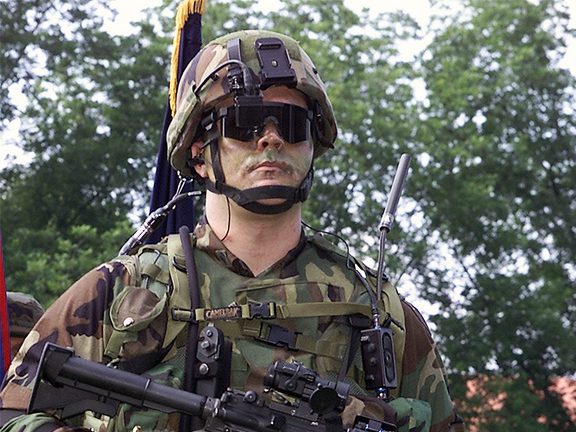
A U.S. Army Soldier demonstrates the Land Warrior Integrated Fighting System during the Army’s 226th Birthday Celebration at Fort McPherson, Georgia, June 14, 2001. (Photo: Susan Norvick / National Archives)
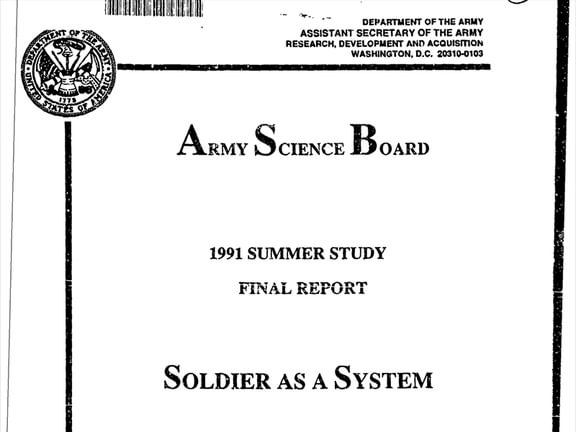
Cover of the Army Science Board’s 1991 Summer Study, “Soldier as a System.” This foundational document marked a formal shift in viewing the individual Soldier as an integrated platform of technologies, not just a bearer of weapons. (U.S. Army Science Board)
It was ambitious. Expensive. Heavy. And amazing… on paper.
At its heaviest, Land Warrior weighed 17 pounds. Batteries tapped out in hours. Displays fogged. The onboard processor? Clocked in at 400 MHz—blazing fast for a desktop in 1999.
And yet, the 4-9 Infantry took it to Iraq anyway. Perhaps because the Army said to, perhaps because even clunky tech that promises a tactical edge is worth the gamble. Leaders could see where their teams were, drop “virtual chem lights” on hazards, and keep momentum during chaotic raids.
Not everyone loved it. “It’s just a bunch of stuff we don’t use, taking the place of useful stuff like guns,” Sgt. James Young told Popular Mechanics in a 2009 field test. “It makes you a slower, heavier target.” But others in the unit pushed back. “All guys bitch and moan for a while about new gear,” said Staff Sgt. Michael Wyatt. “They’ll get used to it.”
Face-worn systems don’t just deliver data; they mediate reality. And if they haven’t earned the user’s trust, they’ll never earn their place.
That kind of trust is hard-won and easily lost. Land Warrior was another step toward the development of fully realized systems. It wasn’t that the right technology was missing; we still had a patchwork of outdated, disconnected tools that made even simple tasks harder than they needed to be.
The systems weren’t designed to serve the user; they were designed to survive the process. That misalignment costs time, energy, trust, and eventually, capability.
From urban ambushes to peer conflicts
Land Warrior got shelved, but the need didn’t.
Enter Nett Warrior: a leaner, more innovative approach built on commercial tech. Ruggedized smartphones. Smarter radios. Lightweight batteries. The design shifted from “imagine what’s possible” to “deliver what’s usable.” Less innovation theater, more operational value.
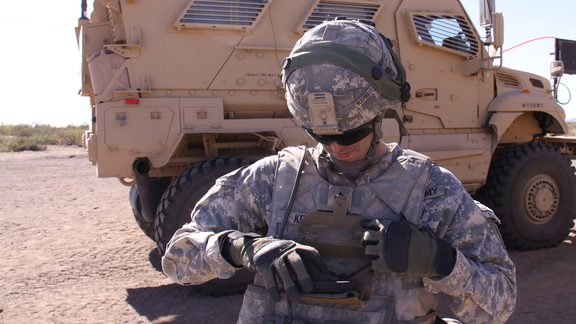
A Soldier from 2nd Brigade, 1st Armored Division demonstrates a Nett Warrior device during the Army’s Network Integration Evaluation at White Sands, New Mexico, Nov. 16, 2011. (Photo: Katie Cain / U.S. Army ASA(ALT) System of Systems Integration Directorate)
And it worked. Especially in Afghanistan, where fire teams navigating tight compounds and rural valleys needed flexibility more than a flashy display. Nett Warrior was designed not just around mission objectives, but the lived experience of the operator.
Then came the next shift: the return of great power competition.
China’s accelerated modernization and growing assertiveness in the Pacific. Peer adversaries with theater-level strike systems, electronic warfare, and full-spectrum ISR.
Heads-up data isn’t just a science project; it’s a survival imperative waiting to be realized.
So, the Army doubled down. IVAS—the Integrated Visual Augmentation System—set out to fuse night vision, targeting, comms, navigation, and more into a single augmented reality headset. A bold bet. A multi-billion-dollar partnership. A moonshot to put mission command on your face.
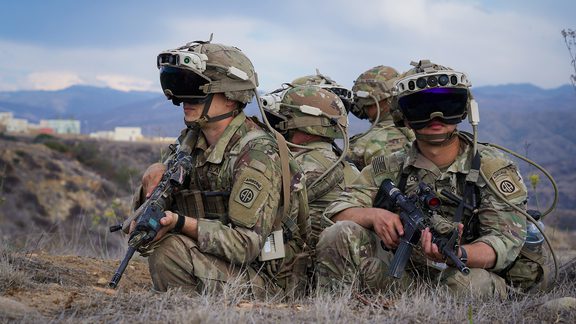
Soldiers from the 3rd Brigade Combat Team, 82nd Airborne Division, train with the Integrated Visual Augmentation System during Project Convergence 2022 at Camp Talega, California, Oct. 11, 2022. (Photo: Sgt. Thiem Huynh / U.S. Army Futures Command)
But friction beat theory. Soldier feedback on human factors, display usability, and low-light sensor performance was negative. Nonetheless, the promise of disaggregated mission command and distributed situational awareness was within reach. The system provided immersive navigation, position location information, and C2 of autonomous systems.
The sharpest feedback wasn't about the capability, but rather the form factor. A system that can't be worn safely for the duration of a mission isn't only frustrating; it's dangerous.
The Army's takeaway wasn't to abandon the vision; it was to rework the approach.
The vision was always right
The idea that every Soldier deserves real-time data? Still true.
Decentralized decision-making at the edge? More urgent than ever.
Tech that adapts to the warfighter, not the other way around? Non-negotiable.
But trying to solve that with a one-size-fits-all headset? That’s like handing everyone in the Army the same boots—from Alaska to Iraq—and hoping it works out.
Modularity isn’t a luxury.
The stakes have never been higher
Our adversaries are moving fast. China is building a joint force to deny U.S. access in the Pacific. They’re fielding AI-enabled targeting, precision strikes, and squad-level kits that connect to space and cyber. Russia is adapting on the fly, deploying EW, drone defenses, and modernized kits like Ratnik to grind down NATO's edge.
Both nations are investing heavily in defense innovation, often with fewer constraints than we place on ourselves. They're learning, evolving, and exporting those lessons across a growing web of aligned threats.
What they're building is capability. What we need is decisive advantage.
That starts at the edge.
We won’t win by copying China’s state-directed tech model or Russia’s brute-force adaptation. We win by outpacing them in what matters most: real-time decisions, modular systems, and warfighter tools that amplify human judgment under pressure.
The future is digital, distributed, and dismounted. And the edge belongs to those who build for it.
The policy lever: a spark, not a solution
In April 2025, the White House issued an Executive Order pushing acquisition reform: rapid prototyping, commercial tech preference, fewer bureaucratic layers. Programs behind schedule or over budget would face cancellation.
It’s a step. But let’s be honest: an EO doesn’t rewrite decades of institutional inertia. Reform takes more than paperwork—it takes leadership with urgency, clarity, and courage to break cycles of delay.
Still, the direction matters. It signals a shift in priorities. Speed and modularity are moving from buzzwords to benchmarks.
What now
Systems that start with the user and work toward the mission. Modular kits that enable Soldiers and their command to choose exactly what the mission demands today while ensuring readiness for the next fight.
We must not build gadgets that burden. We must provide new simplicity, lethality, and survivability for the people who will fight America’s hardest battles.
Industry continues to peddle comic book ideas. The Soldier has been promised digital transformation but has been subjugated to politicized business agendas. No longer. With the frontline operator at the center of every decision, we deliver truly discriminating capabilities.
This is how we win.
Frontline Forward.
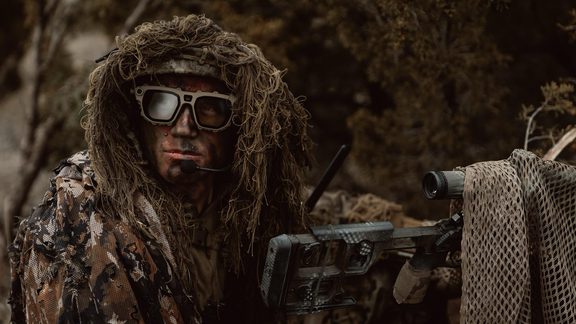
Written by Kayla Haas and David Marra.

